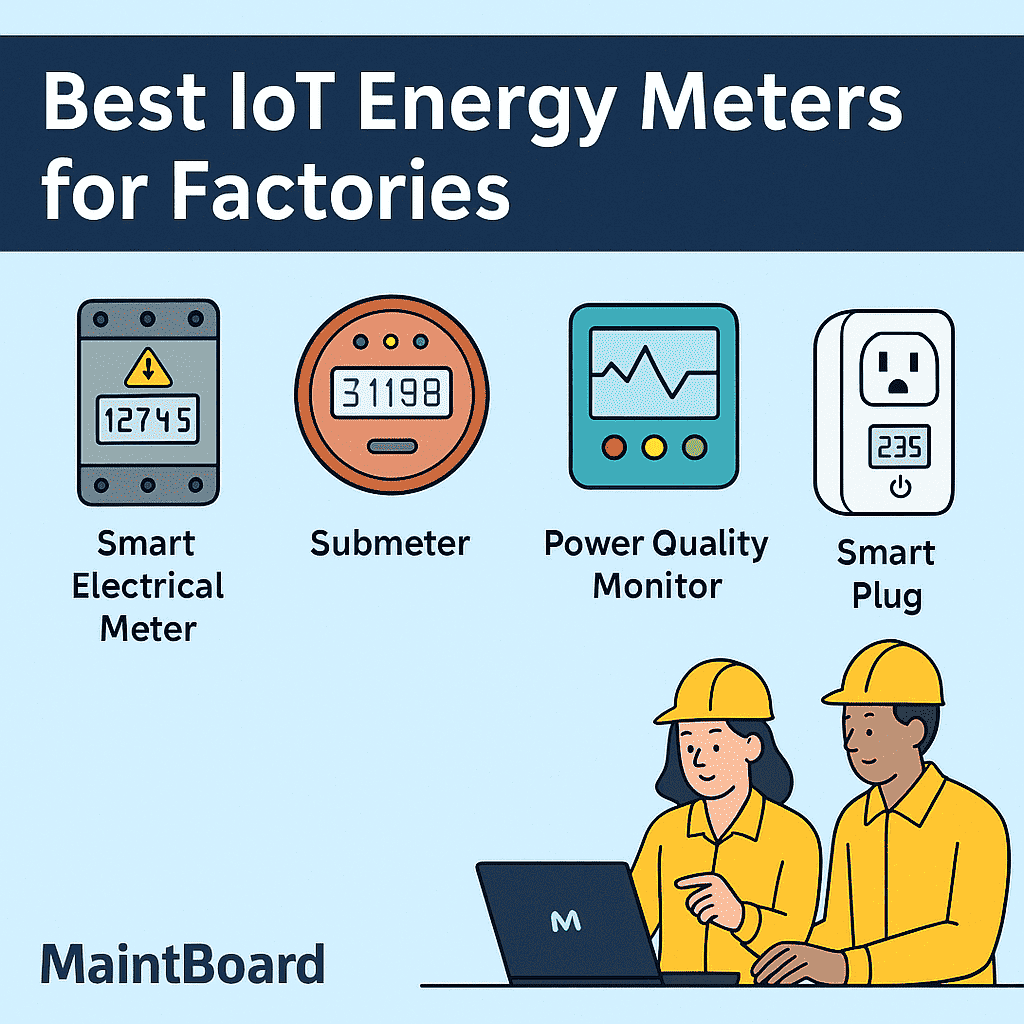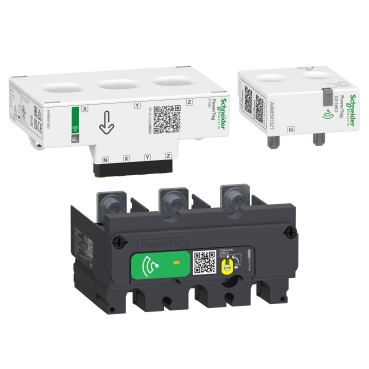Top 5 IoT Energy Meters Factories Can Use to Slash Energy Waste

Introduction
IoT energy meters for factories are essential for tracking, analyzing, and optimizing energy use in real time.
Factory energy consumption is a critical cost—and one that’s often hidden in plain sight. IoT energy meters for factories provide real-time visibility into electricity, thermal, and air usage at the equipment level.
With the right meters, you can catch inefficiencies early, automate maintenance alerts, and reduce downtime-triggered energy loss.
In this article, we list the best IoT energy meters for industrial settings and explain how they help maintenance and energy teams get the most from every kilowatt.
What Makes a Good IoT Energy Meter for Factories?
When selecting an IoT energy meter for your plant, look for:
- Real-time data streaming over Modbus, MQTT, or OPC UA
- Multi-channel support for 3-phase or multiple asset feeds
- Open API or data export options for CMMS or BMS integration
- Load profiling and harmonic analysis (for power quality)
- Alerts and thresholds for overconsumption or faults
Bonus if it includes mobile access, remote diagnostics, or built-in dashboards.
Also consider the installation context—panel-mounted meters for centralized control or DIN-rail models for machine-level granularity.
1. Schneider Electric PowerTag Energy Meters

- Compact wireless design
- Integrates with EcoStruxure and third-party platforms
- Tracks energy, current, voltage, and power factor
- Compatible with Modbus TCP and cloud APIs
Use case: Ideal for panel-level metering and monitoring motor control centers.
Why choose it: Easy to retrofit and scale. Especially useful in facilities already leveraging Schneider infrastructure.
2. Siemens SENTRON PAC Series

- High-precision measurements for industrial applications
- Built-in Ethernet with Modbus TCP
- Energy profiling, data logging, and alarms
- Web-based interface for visualization
Use case: Excellent for medium-voltage systems and sub-metering within production lines.
Why choose it: Offers Class 0.2S accuracy and advanced diagnostics, perfect for power-sensitive operations.
3. ABB EQmatic Energy Analyzer

- Aggregates data from up to 128 Modbus RTU meters
- Web-based dashboard for usage trends
- RESTful API for easy integration
- Ideal for multi-load management
Use case: Best for multi-building plants with centralized energy management.
Why choose it: Enables portfolio-level insights across sites, helping energy managers benchmark performance.
4. Carlo Gavazzi EM Series

- DIN-rail mountable for control cabinets
- Energy, demand, and power factor measurement
- Supports Modbus RTU and Modbus TCP
- Compatible with BMS/SCADA/CMMS platforms
Use case: Great for machine-level energy monitoring and factory automation.
Why choose it: Modular design makes it versatile and easy to deploy in tight enclosures.
5. Janitza UMG 96RM Series

- Advanced power quality analysis
- Real-time visualization and alarm features
- Open data protocols (Modbus, BACnet, SNMP)
- Seamless integration with industrial networks
Use case: Ideal for plants prioritizing power quality alongside energy use.
Why choose it: Combines meter-grade accuracy with analytics, helping detect harmonics and transient faults.
How to Integrate IoT Energy Meters with Your CMMS
IoT meters work best when paired with a CMMS like MaintBoard:
- Stream energy data directly into asset history
- Trigger alerts when usage exceeds thresholds
- Correlate downtime with energy loss
- Generate automated energy-based work orders
MaintBoard supports Modbus, MQTT, and OPC UA protocols, making integration straightforward.
Bonus tip: Use your CMMS to link meter data with failure events, so you can spot patterns like increasing kWh before a breakdown.
Related: Energy Meter CMMS Integration to Boost Uptime and Cust Costs.
Tips for Choosing the Right Energy Meter
- Start with high-load assets (compressors, HVAC, ovens)
- Choose meters that support remote access for real-time visibility
- Confirm protocol compatibility with your CMMS or edge devices
- Prioritize scalability if you plan to expand to other zones or buildings
Also, validate certification (e.g., MID or ANSI) based on your region’s compliance standards.
Use Cases: What Energy Meters Can Reveal
- A pump motor showing rising kWh/hour with no production increase → Bearings might be failing
- Compressed air usage rising overnight → Hidden leak in pipe network
- High harmonic distortion alerts → Risk of premature equipment wear or data errors
- Chiller showing low power factor → Suggests imbalance or undersized capacitor banks
Energy meters transform reactive maintenance into proactive strategy.
Conclusion: Equip Your Factory for Smarter Energy Control
Investing in the right IoT energy meters is a foundational step toward digital maintenance and sustainability. From load optimization to predictive maintenance, these meters give your plant the data it needs to perform at its best.
Pair them with MaintBoard to take action on the insights they uncover and close the loop between energy visibility and operational performance.
Talk to our team to see how we help factories implement energy-first maintenance.
